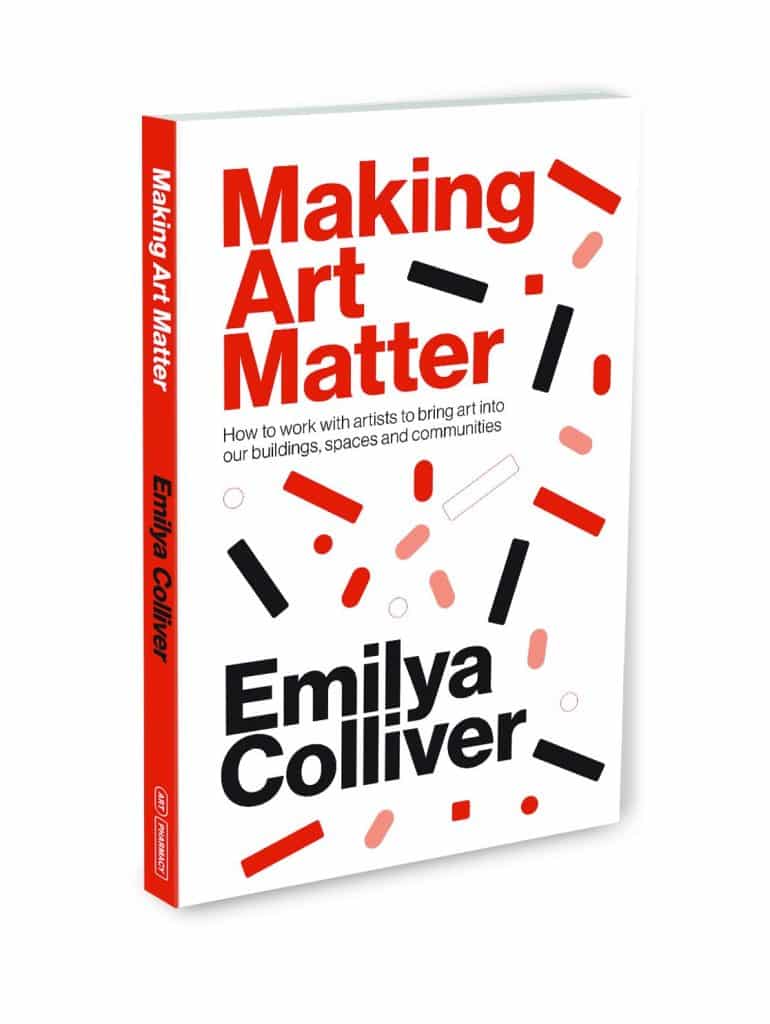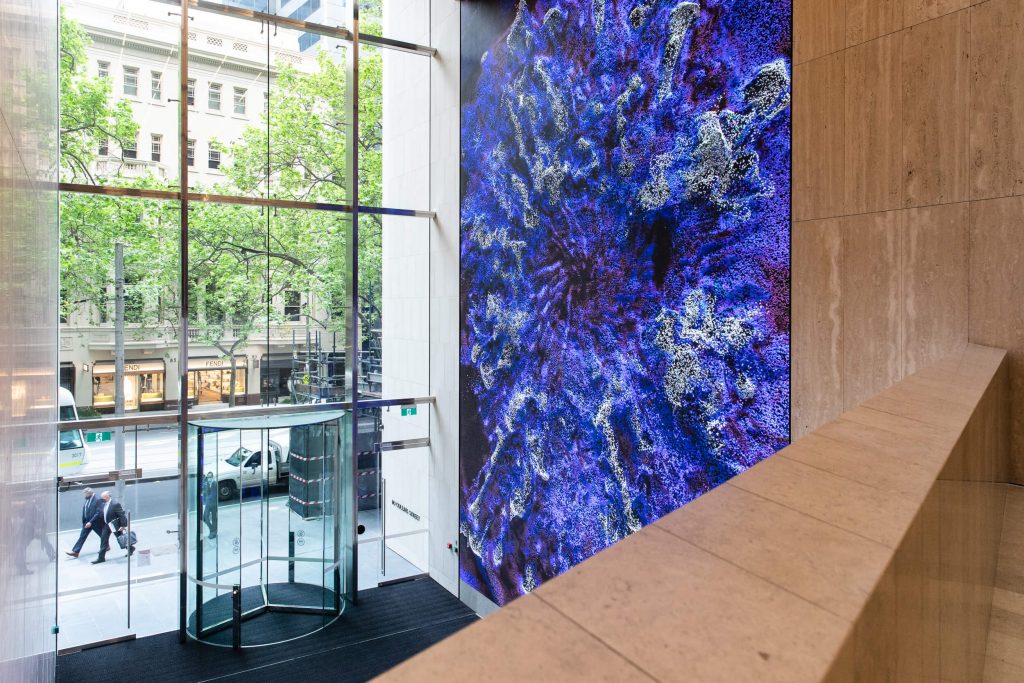‘There is nothing to be gained by participating in an environment that is exclusive rather than inclusive’ author and Art Pharmacy Founder and Director Emilya Colliver writes in the early pages of this manifesto which packs a punch.
Her conversational tone is an antidote to the ‘art speak’ that can alienate individuals and commissioning bodies, and she concedes that for the uninitiated it’s difficult to navigate the ‘competitive and secretive’ commercial art world.
Instead Colliver offers actionable ideas to learn about what kind of art you enjoy and how to include it in your environment as well as real world examples of creating larger art experiences within the existing system. It’s aspirational but accessible.

Colliver talks about the value of art in public space and accounts for the essential and practical steps that must become the norm for us to achieve this. They can be summarised as giving the arts equal footing, but include; art as a priority in planning (not an add on), art in tender frameworks, empowering clients to discern and direct the art in homes or corporate spaces and, of course, paying artists properly and facilitating their learning.
She also notes that risk aversion for asset or project managers needs to be considered, but as with quantifying this in other contexts we should draw on professional support. Now, while this obviously loops back to the knowledge and services of the author she makes an important point. Consider the art early on. If art is a core capability for winning a tender or at the top of the list when shaping your home, art projects will be better and, as part of the overall process, less risky or stressful.

Colliver encourages us to see our relationship to the art world as intuitive, fair and one to explore. For example, as with any work or personal relationship a good start with artists is ‘being able to articulate how they can succeed in their role’.
It’s an educational but engaging book. So, how can you use it? I’d recommend this guide for those looking to build an art collection (she’s got ‘ten top tips’), people with home renovation projects, her main market the business world whether that’s a group of 2-6 people who gather to plan art acquisitions or programming for the office or larger commissioning bodies, and those of us in the art world for inspiration on how to optimise your participation in this commercial and creative reciprocity.

Read in a sitting but certainly a guide to dip in and out of for place making activities the book is comprised of sensible chapters from ‘Who I Am’ to ‘Patrons and Payments’. It is spliced with cheerful illustrations and pull quote provocations such as – “Once you have identified a problem…why not try art as the solution?” The title ends with an archive of Art Pharmacy’s partners and projects as well as the suggestion that in COVID times, bringing art into offices will inspire people to return as well.
Colliver sells her expertise, but that doesn’t preclude ‘Making Art Matter’ from being a motivating text which speaks to both sides of the fence, as she notes her team at Art Pharmacy are “creative translators” who ‘develop connections…by looking, talking and informing. We work to break down the misconception that the art community is a world unto itself.’
You can purchase ‘Making Art Matter’ here.